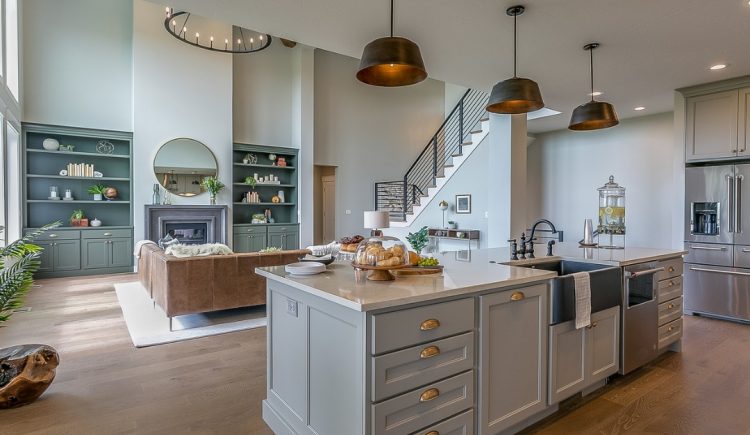After you buy a new home, you’re faced with an empty blank canvas. For some, this can be an exciting possibility, while for others, it can be daunting. The design possibilities can be endless, so knowing where to start can feel overwhelmingly complicated. If you have an empty house that needs to be brought to life, read on for the design checklist every new homeowner needs.
Determine the function
Before space planning, buying furniture and determining colors, it’s essential to decide on the function of each space. Determining the room’s function will guide you as you begin to space plan the room, create the floor plan, choose the furniture you need and even select the colors. For example, if the home has a formal dining room and you know you won’t use a formal dining room, perhaps you turn this into a cozy and moody cocktail lounge or a brightly-colored homework room.
Create the floor plan
Once you determine the function of the rooms, you can begin creating the layout, which will create a functional and beautiful space:
- Take careful measurements for doorways, windows and wall openings.
- To visualize where you want the furniture, painter’s tape is a tried and true way to mark where furniture can go, and you’ll be confident that it will fit in the space.
- You can draw the room on paper or use a consumer-friendly digital floor plan tool, such as Homestyler, to see how all the furniture can come together.
It’s also essential to select the room’s focal point. Position the seating towards the focal point, then add the coffee table, end tables and floor lamps.
Visualize the color theme
Establishing a color palette is the best way to guide your purchasing decisions. The 60-30-10 rule is a decorating guideline that has stood the test of time. This means that 60% of a room should be a dominant color, 30% a secondary color and 10% an accent color. Carrying variations of these colors throughout the home will help it feel unified and intentionally designed.
Purchase the furniture
You can select furniture that fits the room using the floor plan you created. The furniture sizes should align with the painter’s tape shapes or your digital floor plan. Select only furniture that fits your floor plan as you begin furniture shopping. When you’re designing an empty room, it’s ok to fill it slowly and intentionally. Once the large, foundational pieces are purchased, such as the sofas, chairs and tables, leave space for accent pieces that you can only collect over time.
Remember the walls
Hanging art, photos, mirrors or other decorative accents is the quickest way to make a new house feel like yours. Lay out all your existing pieces, and walk through the house to map out where they will best fit in your new home. Filling the walls with your personal items can instantly make the home feel warmer and add personality.











